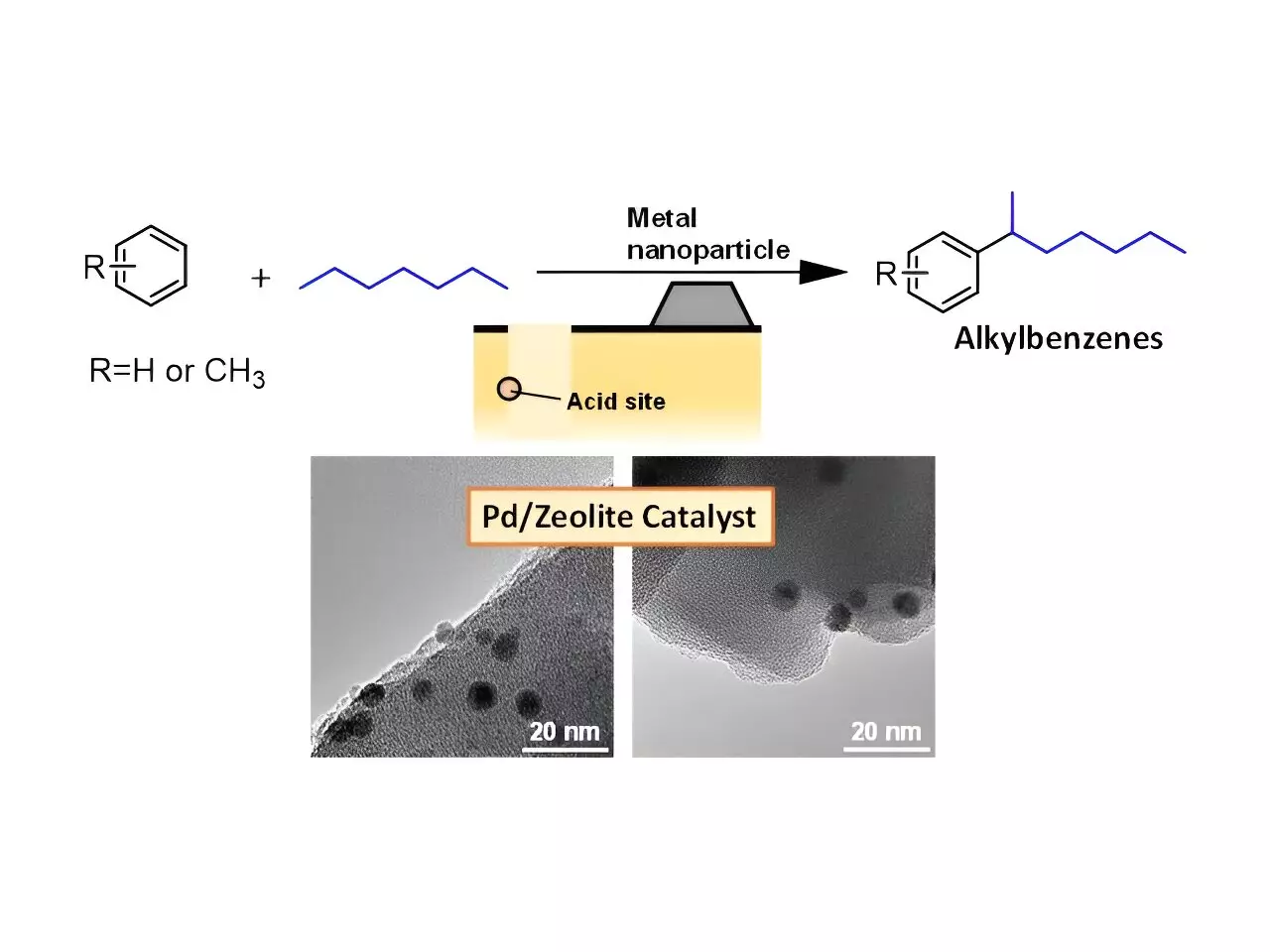The conventional techniques used in the production of alkylbenzene have long been associated with toxic halogen byproducts. However, researchers have recently developed a groundbreaking method that not only offers a more efficient and cost-effective manufacturing process but also minimizes the environmental impact. In a paper published in ACS Catalysis, the researchers outline their findings and highlight the potential of their new technique.
The Quest for Efficient Chemical Production
For years, scientists have been exploring innovative ways to improve the efficiency and sustainability of chemical production processes. One area of interest has been the utilization of alkanes, which are compounds consisting of carbon and hydrogen atoms bonded together. The primary sources of alkanes are crude oil and natural gas. However, utilizing alkanes directly for chemical transformations has proved challenging due to the high stability of their carbon-hydrogen bonds, making them laborious to break apart.
Alkylbenzenes, a key ingredient in the production of detergents, are utilized in various household and industrial cleaning products such as soap, toothpaste, laundry detergent, and cleaners. Traditionally, the production of alkylbenzenes required several steps and additional compounds called alkylating agents. These agents were produced from alkanes through a series of steps and were necessary to carry out the alkylation process. However, this process increased costs and waste generation, making it less environmentally friendly.
A Greener Approach: Alkanes as Alkylating Agents
To streamline the production process and reduce costs, researchers investigated the possibility of using simple alkanes directly as alkylating agents for alkylbenzene synthesis. By eliminating the need for additional compounds, the researchers aimed to create a more efficient and environmentally friendly alternative to traditional methods. Professor Ken Motokura, the lead author of the study, believes that this approach not only reduces costs but also minimizes waste generation.
The success of direct alkylation using alkanes as alkylating agents was made possible by the development of novel catalysts. The researchers discovered that palladium nanoparticles, situated on the outer surface of H-ZSM-5 zeolites, effectively catalyzed the direct alkylation process. These zeolites, made of aluminum and silicon, contain microscopic pores that serve as sites for the chemical reaction.
The Process Unveiled
The direct alkylation process starts with the activation of an alkane inside the zeolite pores, preparing it for the addition of a benzene. The reaction between alkane and benzene produces alkylbenzene, removing two hydrogen atoms in the process. To regenerate the active sites within the zeolite, these hydrogen atoms must be recombined to form molecular hydrogen (H2). This recombination occurs through a “hydrogen spillover” phenomenon, in which hydrogen atoms move from the activation sites to the palladium nanoparticles on the outer surface to facilitate recombination.
Efficiency and Selectivity: A Winning Combination
Direct alkylation not only offers increased efficiency but also remarkable selectivity. The researchers achieved an impressive 95.6% selectivity for the desired alkylated products, ensuring a higher quality of output compared to traditional methods. While the findings are promising, the overall yield from the process still falls short of industrial application requirements. As a result, the research team aims to refine their technique to enhance productivity.
The innovative approach to alkylbenzene production presented in this study showcases the potential for more efficient, cost-effective, and eco-friendly manufacturing processes in the chemical industry. By utilizing alkanes directly as alkylating agents and developing novel catalysts, the researchers have paved the way for a greener future in detergent production. With further refinement, this technique could revolutionize the industry’s practices and contribute to a more sustainable and environmentally conscious world.


Leave a Reply